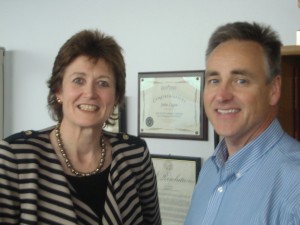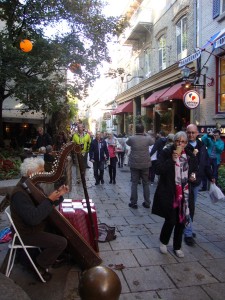 From October 6 to 9, Quebec in Canada hosted the second edition of the International Summit of Cooperatives, with the main theme being the power of innovation.
From October 6 to 9, Quebec in Canada hosted the second edition of the International Summit of Cooperatives, with the main theme being the power of innovation.
Here, CDS chief executive Sarah Deas discusses a US organisation driving employee ownership and takes a trip to a co-operative shopping quarter.
The first part of the blog can be read here and the second part can be read here.
An ESOP (Employee Share Ownership Plan) is another form of employee ownership that is becoming more widely adopted. So, I was delighted to meet Perry Phillips and Camille Jensen (pictured above), from the specialist consultancy, ESOP Builders.
They highlighted that there are now approximately 1000 Canadian ESOPs, the majority (80%) having come about as a succession solution. Most famous is WestJet Airline, where 80% of staff are employee owners (modelled on Southwest Airlines).

Sarah with Roy Messing
I was also delighted to meet Roy Messing, Chris Cooper and Bill McIntyre of the Ohio Employee Ownership Center. Established in 1987, the centre has helped 694 companies consider ownership succession, resulting in 92 employee buyouts and creating 15,000 employee owners. In America there is legislation to support the creation of ESOPs – see my previous blog.
The Center was the driving force behind Evergreen Cooperative – the innovative model of socio-economic development in Cleveland. Whilst there are similarities in our approach, there is clearly much that Scotland can learn from OEOC’s 27 years’ experience. Interestingly, they are currently establishing a Cooperative Development Center – an area where we can share our experience.
 A visit to Quebec is not complete without a visit to the Quartier Petit Champlain. This delightful shopping quarter in the old city is a co-operative owned by its tenants. 50 artists and traders formed a co-operative to buy the properties. Desjardins, the leading financial co-operative, supported members with loan finance.
A visit to Quebec is not complete without a visit to the Quartier Petit Champlain. This delightful shopping quarter in the old city is a co-operative owned by its tenants. 50 artists and traders formed a co-operative to buy the properties. Desjardins, the leading financial co-operative, supported members with loan finance.
A co-operative model was chosen for practical reasons – an ideal model that allows shared management of the buildings and promotion of the quarter to tourists. An elected board has oversight, including approval of new tenants/owners and all members are invited to attend an annual assembly.
So, how do I summarise this visit? A golden experience – not just the leaves on trees, the abundance of pumpkins and the warm hospitality but also in the richness of learning. Thanks to everyone that was so open in sharing your story. Let’s stay in touch!